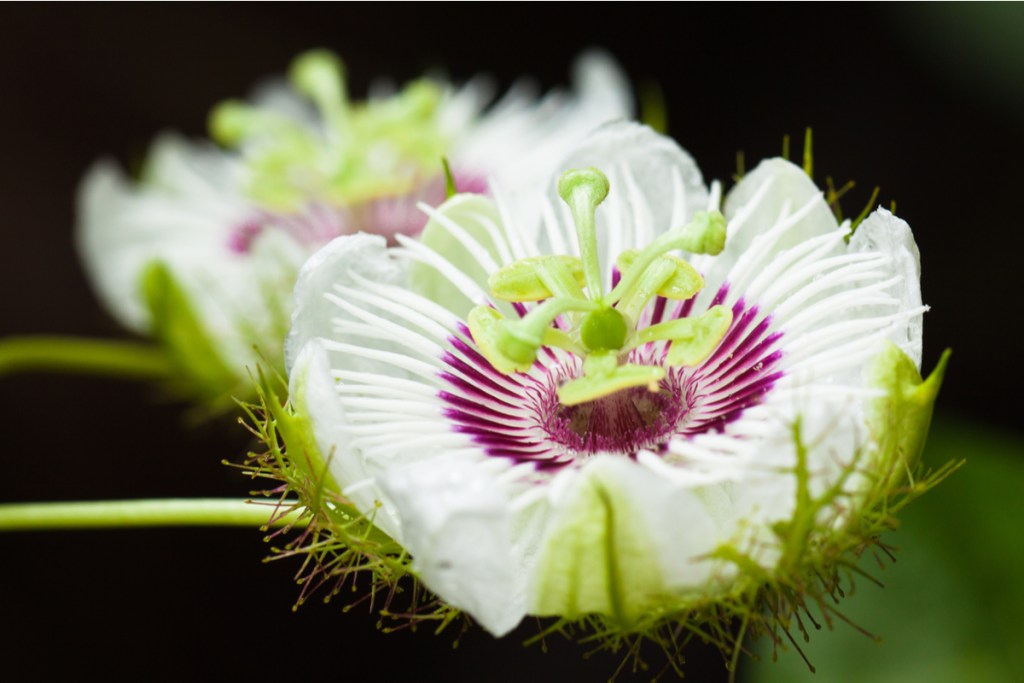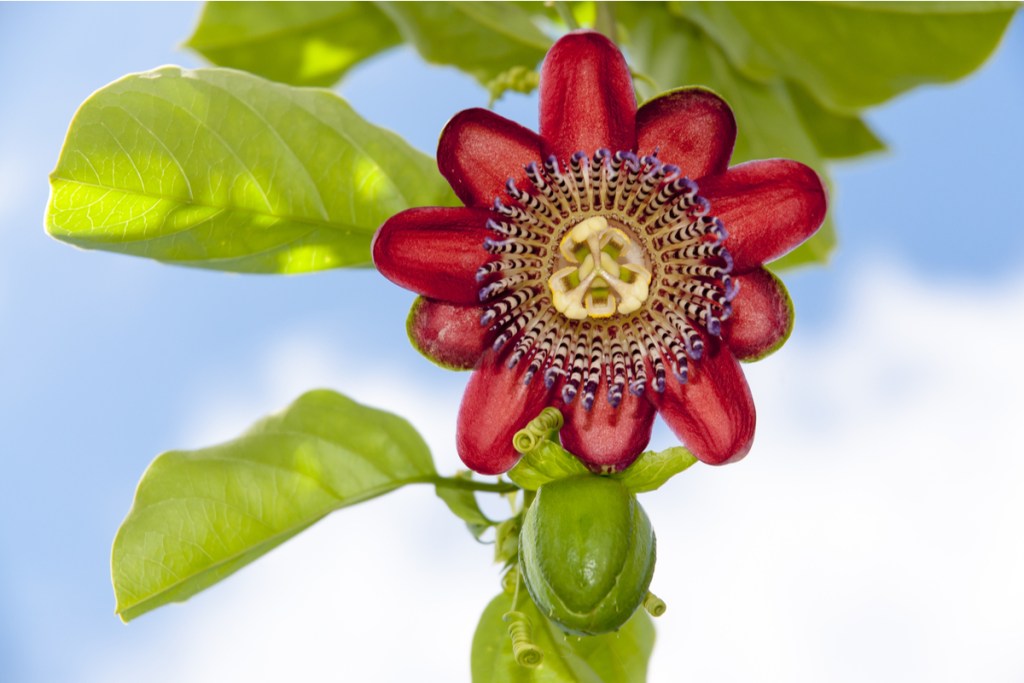There are hundreds of passion flower varieties around the world, and the good news is they mostly differ in appearance and not in care! Knowing how to take care of passion flowers enables you to purchase and grow all kinds of this beautiful flower without having to remember specific nuances for each one. Some of the most popular ones are the Passiflora incarnata and the Passiflora caerulea (which have purple and blue blooms, respectively). Even though they look like tropical plants, they can grow in USDA hardiness zones five through nine. With proper care, you’ll be rewarded with unique, beautiful blooms.

General tips for growing passion flowers
There are some general things to keep in mind when learning how to care for passion flowers. If you’re in USDA hardiness zones five through nine, they’re great for growing outdoors as vines on fences and trellises. In other zones, they can be grown in containers on patios and decks during the warmer months.
They’ll thrive best in a location with full sun to partial shade where they’ll get a minimum of four hours of light a day; however, they’re very delicate, so make sure they’re in a place where they won’t be too affected by winds. Passion flowers like to be well-watered during the hotter months, and using an organic mulch will help keep the roots cool. Keep in mind, too, that you won’t need to prune it much during the growing season, but if you do want to manage size and promote new growth you can trim back the plant in early spring.
In-depth care to help your passion flower thrive
As mentioned in the general tips, consistent pruning and deadheading aren’t needed throughout the growing season. If there are spent flowers that haven’t been fertilized (you’ll be able to tell because there won’t be a fruit growing once they’re dead), feel free to trim them off to keep the plant looking beautiful.
Passion flowers are also prone to aphids, white flies, and spider mites, so you’ll want to do regular inspections of the leaves and stems to see if your plants are affected. If you notice any sign of damage, you can use an insecticidal soap to clear up the infestation by following the directions on the bottle. If it’s gotten too bad, you may have to trim off the damaged part to encourage new growth.
Soil and water needs
Passion flowers love a well-draining but moist soil. They aren’t too picky about the pH and are able to thrive anywhere in the neutral to acidic range. You don’t want the plant to be soggy (roots never like to be drowning in water), so you can also add a mulch around the base of the plant to help retain moisture.
The well-draining soil is particularly important, too, when you consider that passion flowers thrive with one to two waterings per week that add up to about an inch and a half of water. Be sure to stay on top of their watering schedule, especially when there’s no rain, since passion flowers don’t handle drought well.
Lighting and temperature
Aside from water, light and temperature are probably the most important factors to having a thriving passion flower. They prefer an area with full sun to partial shade and are particularly fond of warm weather; however, they don’t like direct sunlight because they can easily be sunburned. So although they do survive in full sun, you may want to choose a location where they don’t get direct midday lighting.
Passion flowers in zones six through nine should be able to survive outdoors during the winter so long as they have some winter protection. In zone five (or if you don’t want to risk losing your plant), you should pot it and bring it indoors for the colder months.

Do they require extra care and attention?
Passion flowers don’t require a lot of maintenance during their growing season in regards to pruning and deadheading; however, because they’re heavy feeders, you may find yourself tending to them more than your other plants. They will thrive more with a light feeding of a general-purpose fertilizer every four to six weeks starting from when new growth emerges in the spring until the early fall.
Their light requirements and delicacy could also factor into them being more high maintenance than other plants. Because passion flowers can be easily damaged by winds and easily burned by sun –– yet enjoy full sun to partial shade –– you want a location that’s protected but not so much so that the plant won’t get the light it needs. For many, this may mean growing the passion flower indoors instead of outdoors, and that’s okay!
Why your passion flower might not be blooming
For a passion flower to bloom — and really for most plants to bloom — proper care is required. That means ideal conditions and care. If you notice that your passion flower is growing but not blooming, it may be due to the plant not getting everything it needs. This could be anywhere from under- or over-watering to improper light to not enough fertilization and nutrients. Figuring out why you aren’t seeing any of those beautiful passion flower blooms may require a bit of examination on the overall care process.
It could also be as simple as: the plant isn’t old enough. Passion flower plants don’t always bloom at first. There are several species that won’t bloom for at least a few years, until they’ve established a good root system. The fruits that passion flower plants produce take a lot of energy, so if the plant isn’t big enough, it won’t worry about creating a flower that could lead to fruit. Instead, it won’t bloom until it’s ready.
When the work is put in, passion flowers are truly an eye-catching plant. Their flowers are beautifully unique and oftentimes amaze people seeing them for the first time. Plus, the flowers are the indicator that your hard work is paying off. Care for your plant and it, in turn, will be happy, healthy, and bloom just for you.
Editors' Recommendations
- Plant these stunning flowering shrubs for a showstopping garden display this spring
- 3 incredible reasons why you should be using coffee grounds in your garden
- The truth about holly leaves – interesting facts you might not know
- Unique and whimsical flowers to add to your collection for a fairy-tale garden landscape this spring
- Celebrate Lunar New Year with these beautiful flowers





